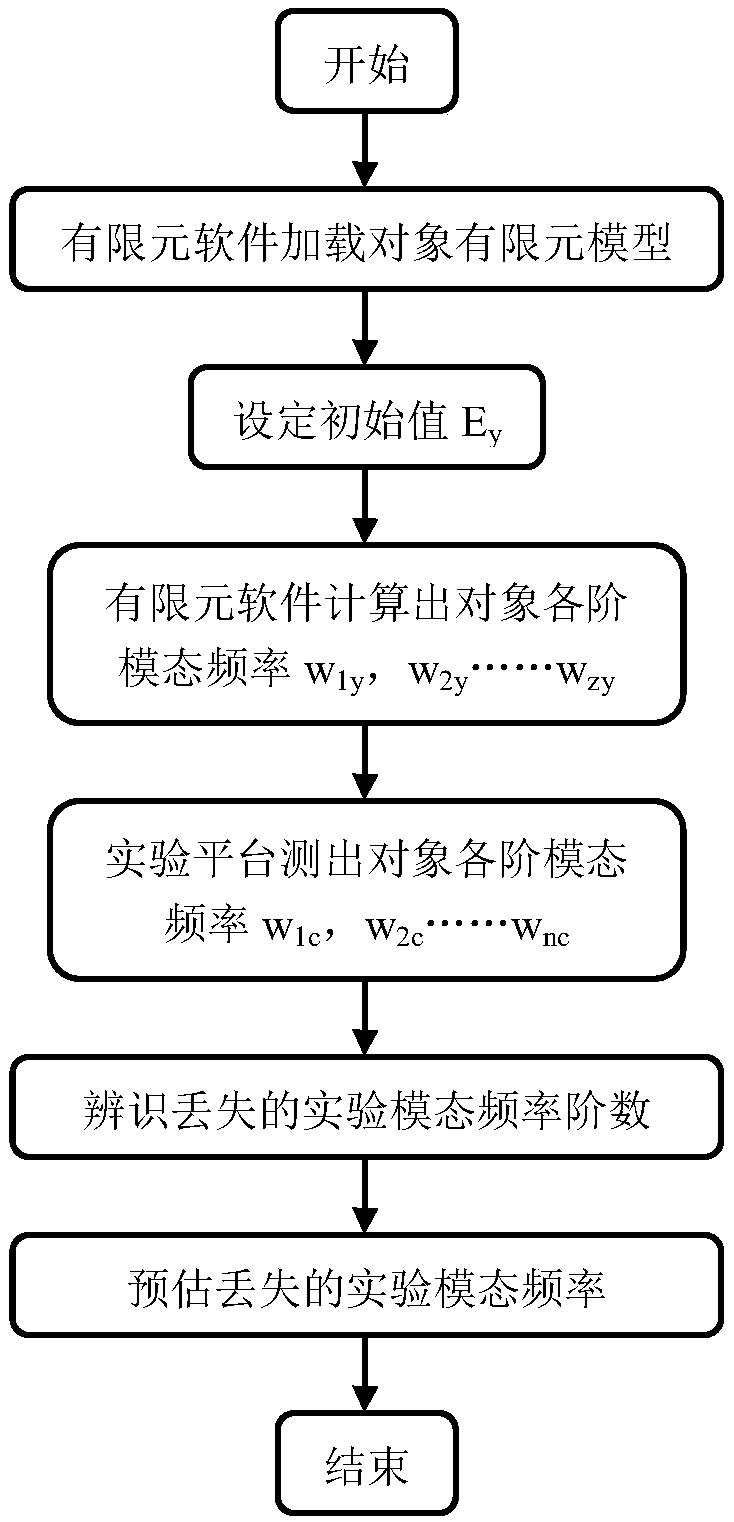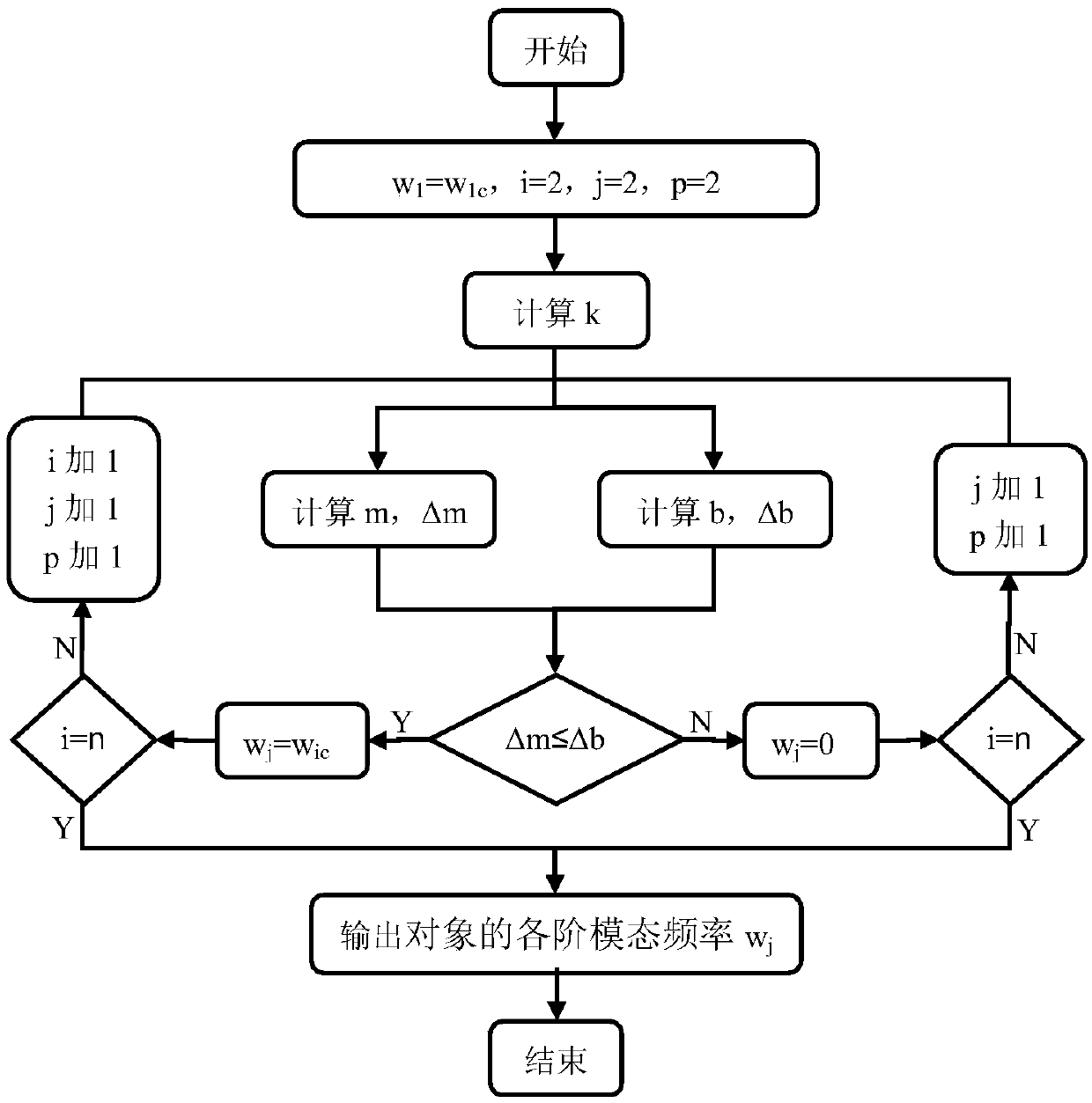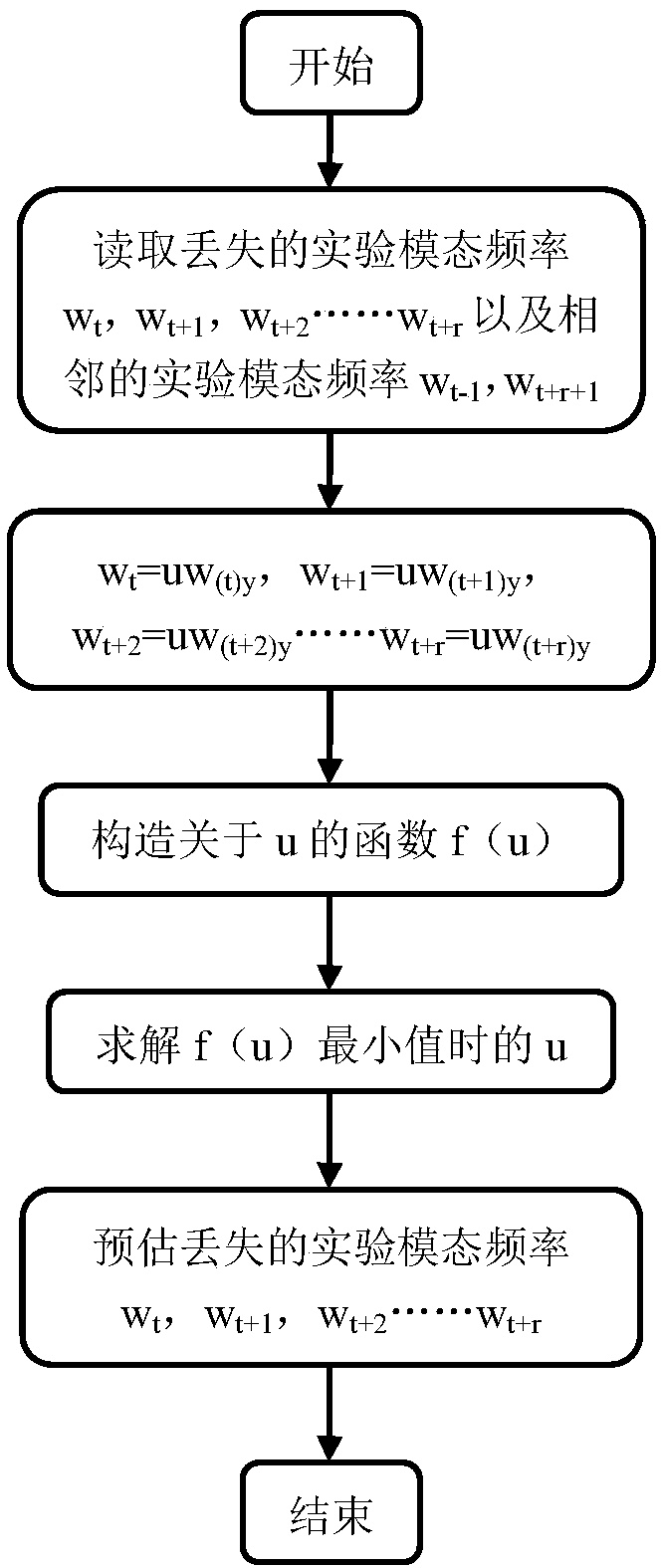A Loss Identification and Prediction Method of Experimental Mode Frequency
An experimental modal and modal frequency technology, applied in the field of mechanical vibration, can solve the problems of high equipment cost, low debugging efficiency, and long calculation time, and achieve the effects of low requirements, improved debugging efficiency, and reduced calculation amount and calculation time
- Summary
- Abstract
- Description
- Claims
- Application Information
AI Technical Summary
Problems solved by technology
Method used
Image
Examples
Embodiment 1
[0036] Example 1: Such as figure 1 As shown, an experimental modal frequency loss identification and estimation method includes the following specific steps:
[0037] Step 1 In the finite element software, import the finite element model of the loaded object;
[0038] Step 2 In the finite element software, set the Young's modulus E of the finite element model y ;
[0039] Step 3 In the finite element software, calculate the modal frequency w of the object 1y , W 2y …, w py ,...W zy , Where z is the maximum order of the modal frequency of the object calculated by the finite element software;
[0040] Step 4 Through the experimental platform, measure the modal frequency w of the object 1c , W 2c …, w ic ,...W nc , Where n is the maximum order of the modal frequency of the object measured by the experimental platform, and n≤z;
[0041] Step 5 Identify the missing experimental modal frequency order
[0042] Such as figure 2 As shown, 5.1 calculate k, where k=w 1c / w 1y ;
[0043] 5.2 L...
Embodiment 2
[0054] Embodiment 2: Step 1 In the finite element software, import the finite element model of the loaded object.
[0055] Step 2 In the finite element software, set the Young's modulus Ey of the finite element model = 1010Pa.
[0056] Step 3 In the finite element software, calculate the modal frequency w of the object 1y = 10.2 Hz, w 2y = 15.4 Hz, w 3y = 22.6 Hz, w 4y =32.1Hz, w 5y = 53.6 Hz, w 6y = 66.7 Hz, w 7y = 72.6 Hz.
[0057] Step 4 Through the experimental platform, measure the modal frequency w of the object 1c =101.3Hz, w 2c = 153.6 Hz, w 3c =319.7Hz, w 4c =535.5Hz, w 5c = 666.6 Hz.
[0058] Step 5 Identify the missing experimental modal frequency order
[0059] 5.1 Let w 1 =w 1c , J=2, i=2, p=2, where w j Is the modal frequency of the object, j is the subscript of the modal frequency of the object, i is the subscript of the measured modal frequency of the object, and p is the subscript of the modal frequency of the calculated object;
[0060] 5.2 Calculate k according to the ...
PUM
 Login to View More
Login to View More Abstract
Description
Claims
Application Information
 Login to View More
Login to View More - R&D
- Intellectual Property
- Life Sciences
- Materials
- Tech Scout
- Unparalleled Data Quality
- Higher Quality Content
- 60% Fewer Hallucinations
Browse by: Latest US Patents, China's latest patents, Technical Efficacy Thesaurus, Application Domain, Technology Topic, Popular Technical Reports.
© 2025 PatSnap. All rights reserved.Legal|Privacy policy|Modern Slavery Act Transparency Statement|Sitemap|About US| Contact US: help@patsnap.com



